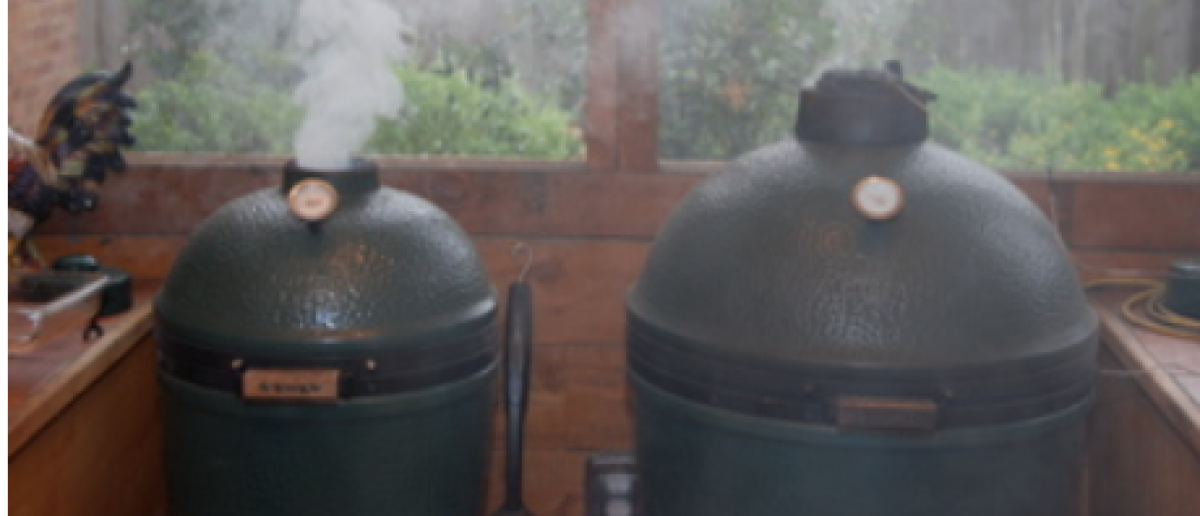
I learned to cook sea bass in a convection oven from my friends and colleagues Mike West and Steve Stephenson – simple preparation at 425* for 22 minutes (thick filet). It’s a great recipe, but of course I just had to try it on my Egg.
I patted the filets dry, then brushed lightly with melted butter and seasoned with salt and pepper.

I set up my BGE for an indirect cook at 450-500*. I inverted my Grill Grates (available at Madison Fireplace & Patio and many local dealers or at Amazon – Grill Grates), creating a flat, griddle-like surface. I sprayed the griddle with Pam and put the filets on (there was a huge flare-up from the Pam dripping onto the indirect piece, but I snuffed it out by briefly closing the dome with the rain cap on top).

After about 6 minutes, I flipped them to prevent burning, and they were done in a total of about 10-12 minutes.

The sea bass filets were plated with roasted broccoli from my garden and saute’ed garlic spinach plus a nice glass of merlot. The fish had a great crust (which the oven recipe doesn’t produce) and a juicy, flaky center. I will definitely be cooking it this way in our future!

Addendum (5/19/16): Slight change in recipe tonight: Added a light sprinkling of lemon pepper and granulated garlic to one side of each filet. Swabbed Grill Grates with vegetable oil and cooked at BGE dome temp of 400*). Pic below:

Serves 2
Ingredients:
2 fresh sea bass filets, about 2 inches thick
1/4 stick butter, melted
Salt and ground black pepper, to taste
High-temp, nonstick spray product
Instructions:
(1) Prepare the Egg for a 450-500* elevated, indirect cook. Invert Grill Grates (or use some other griddle-like accessory) and place on the grid.
(2) Pat the filets dry and lightly brush both sides with the melted butter. Season with salt and freshly ground black pepper.
(3) Spray the surface with a high-temp, non-stick product (be careful of flare-ups).
(4) Place the filets on the surface and flip after about 6 minutes. They should be ready in another 5-6 minutes (one can check the internal temp with an instant-read thermometer if desired).
(5) Rest under foil for 5-8 minutes before serving.




















